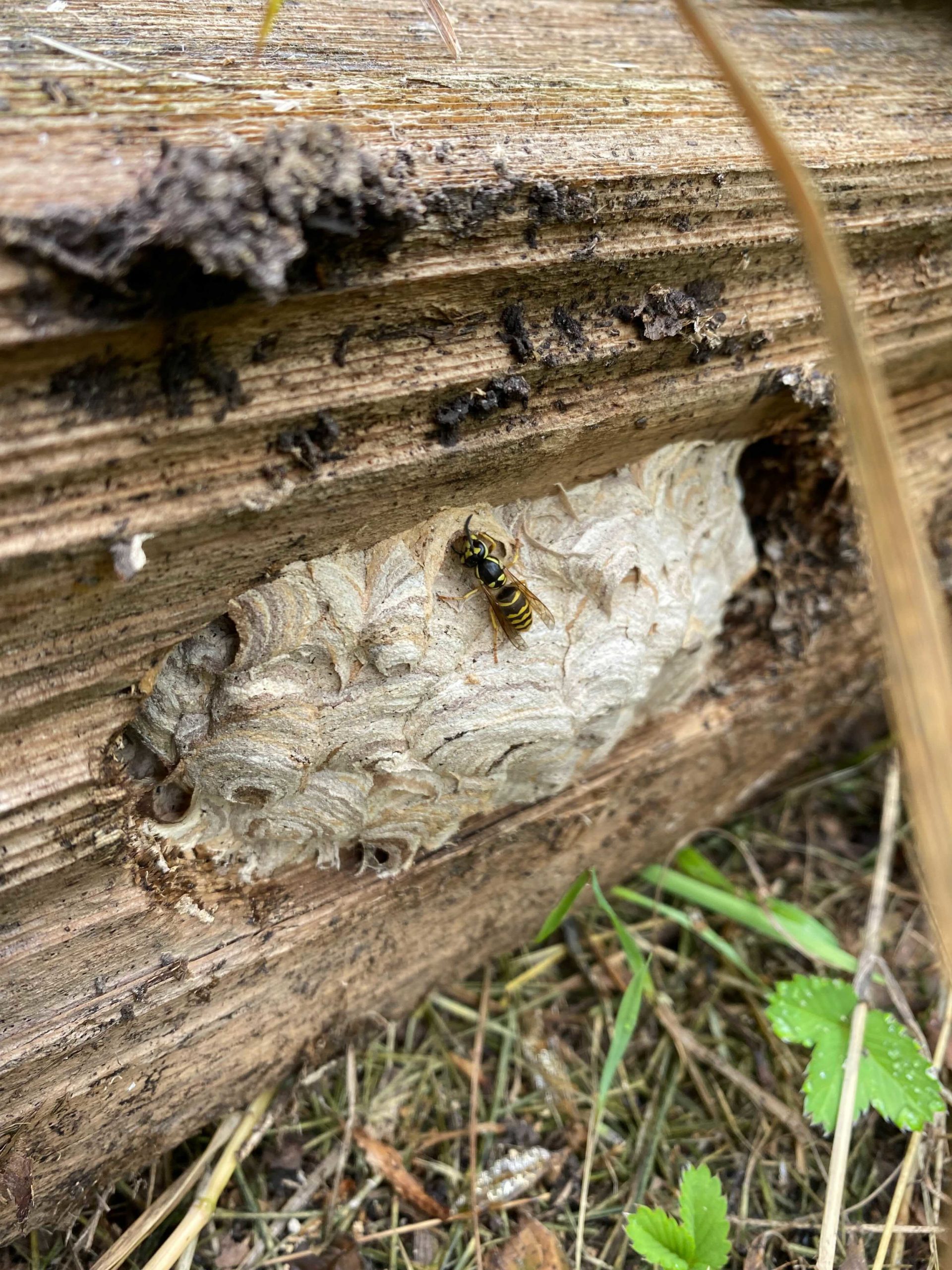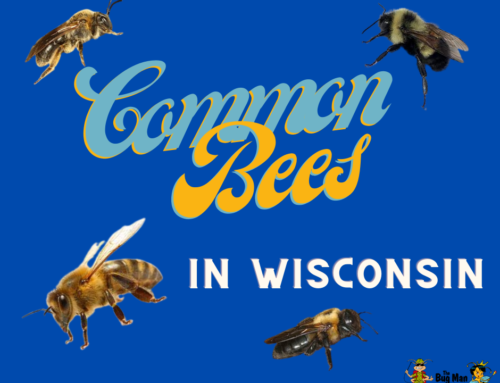Bald Faced- Hornet
The distinctive nest of the bald-faced hornet looks like a grey, papier-mache basketball and can house between 60-100 wasps. The bald-faced hornet prefers to nest in higher areas such as in trees, shrubbery, and bushes. They also attach their nests to eaves, sheds, and utility poles.

A common Bald Faced Hornet Nest in a tree.
The nests are made of a paper-like material of chewed wood and saliva. The nests can be as big as 24” high and 18” across. Each nest features just a single hole for the hornets to fly in and out and the rest of the nest is completely enclosed. Once the nest has been used for the season, it will be abandoned the following year and the colony will rebuild from new materials.
Learn more about Bald-Faced Hornets and their habitats here.
Yellowjackets
While yellowjackets prefer to nest in the ground, they are opportunistic and will nest in and around the home in many different places. Common nesting areas are attics, wall voids, under porches or eaves, gutters, and soffits as well as hollow trees and bushes.
Yellowjackets sometimes nest under eaves or houses or in other strange spots. This one was found in a fallen fence post.

A Yellowjacket in a nest built into a fallen fence post.
And under a set of deck stairs….

A Yellowjacket Wasp nest built under a set of deck stairs.
The nest of the yellowjacket is made of a paper-like pulp made up of tiny bits of wood fibers mixed with saliva. Typically, the nest of a yellowjacket can reach the size of a basketball if left undisturbed. They often take the shape of an upside-down umbrella when visible. Nests that survive multiple seasons can become much larger and will often have multiple queens.

An cone-shaped, Yellowjacket Wasp nest build under the eave of a house.
Learn more about Yellowjackets and their habitats here.
Paper Wasps
With over 22 species in the U.S., Paper Wasps are quite common and are identifiable by their brown and yellow coloring as well as their umbrella-shaped nests. Paper Wasp nests are distinguishable by the open, exposed design that looks like honeycomb.
Their nests are built using a water-resistant, paper-like material that is made from fibers from dead wood and plant stems mixed with saliva.
Learn more about Paper Wasps and their habitats here.
Mud Daubers
Using their mandibles, female mud daubers carry wet mud to create nests consisting of several side-by-side tubes that resemble organ pipes.
Each tube holds an egg, and the female will place inside a paralyzed spider as food and seal the tube to keep the egg safe. When the babies are ready, they bore out of the tube, creating a new hole on the side of the tube.
Mud daubers prefer to build these nests in protected spots such as under eaves, in garages, sheds, and attics or on porch ceilings or window ledges.
Learn more about Mud Daubers and their habitats here.


